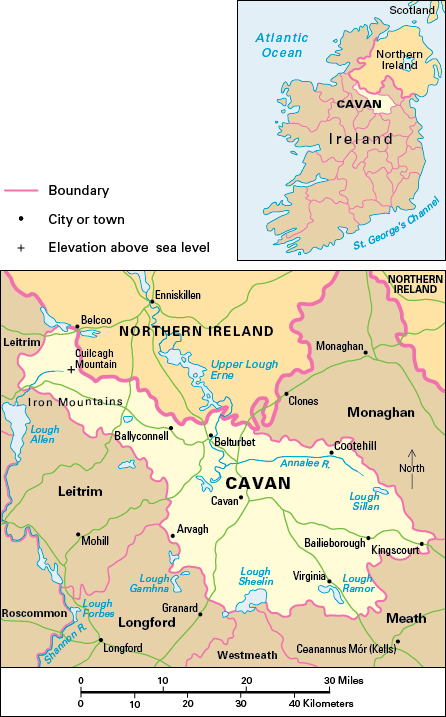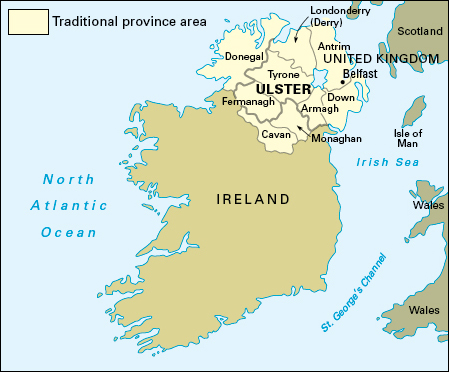Cavan, County, lies in the northern part of the Republic of Ireland. It is one of the three counties of the province of Ulster that are not in Northern Ireland. The other two counties are Donegal and Monaghan. In the Irish language, County Cavan’s name is Contae an Cabhán.
County Cavan is sometimes called the County of Lakes and Hills because such features occupy much of its area. The mountains in the northwest include Cuilcagh, the county’s highest point, which rises 2,185 feet (666 meters) above sea level. The county covers 730 square miles (1,891 square kilometers). The town of Cavan is the main service and manufacturing center.


Most of the workers in County Cavan are employed in service industries, which include education, health care and social work, and wholesale and retail trade. Tourism is also important to area businesses. Attractive lakes, rivers, and streams draw many anglers to the county. Anglers are people who use a rod, reel, and line to catch fish.
County Cavan is largely agricultural. The main type of farming is dairy farming. Most farms also raise young cattle. County Cavan is one of the largest producers of hogs in the Republic of Ireland.
Manufacturing is more important to County Cavan than to most other Irish counties. The most important manufacturing activity is food processing, including meat processing and dairy processing. Other industries manufacture building materials, fabrics made from recycled plastic bottles, and health care products. Mined products in the county include gypsum and crushed limestone.
Stone monuments show that there have been people living in what is now County Cavan since the Neolithic phase of the Stone Age. Many crannogs (lake dwellings) in the area are of a later date. The county once formed the eastern part of the Celtic kingdom of Bréifne. Until the 1500’s, it was part of the province of Connacht. County Cavan remained under the control of the O’Reilly clan until the 1600’s, when English and Scottish settlers were granted lands as part of the plantation (British colonization) of Ulster. The main towns of the county were founded or expanded at that time.
